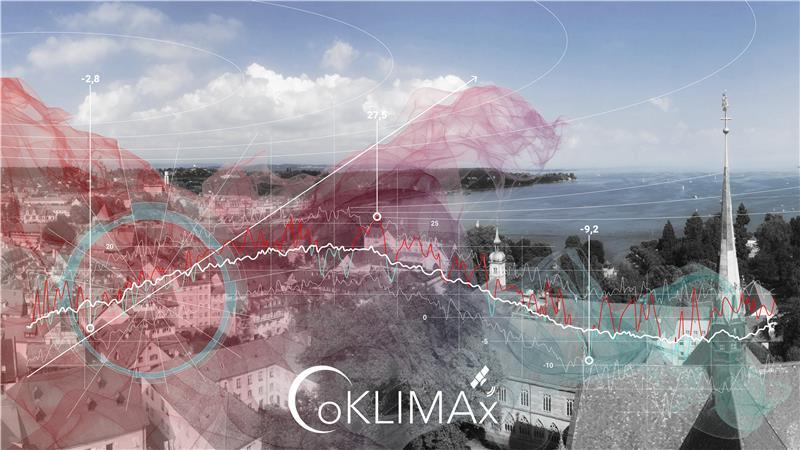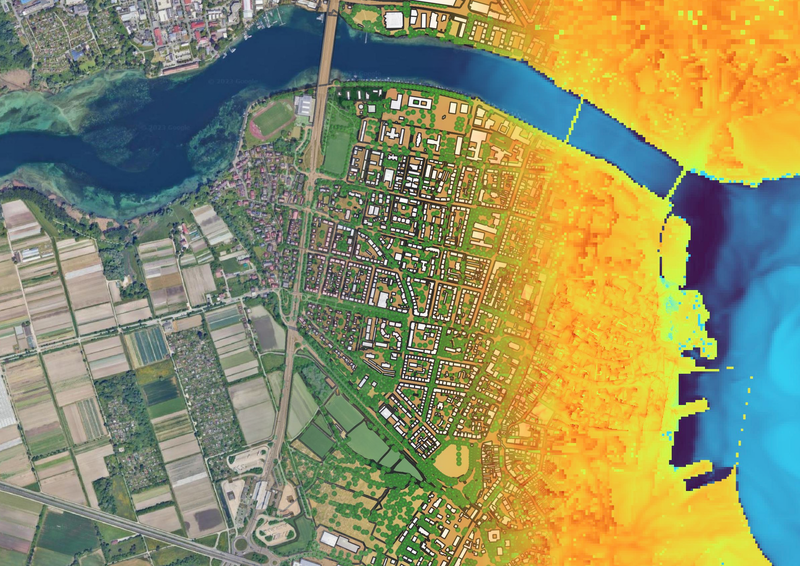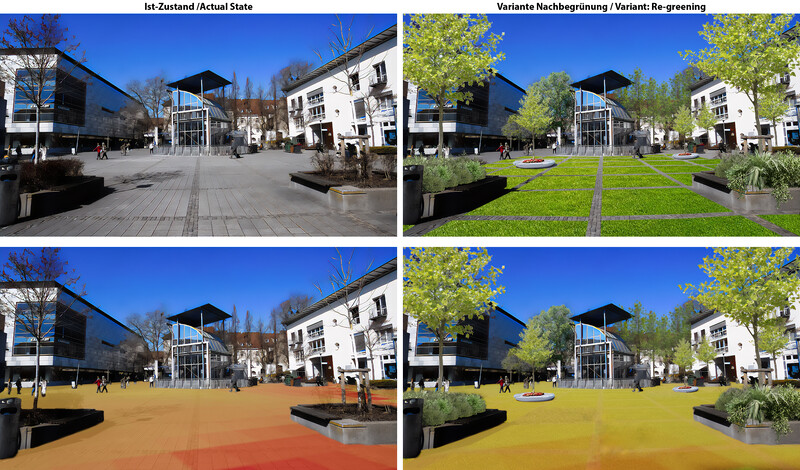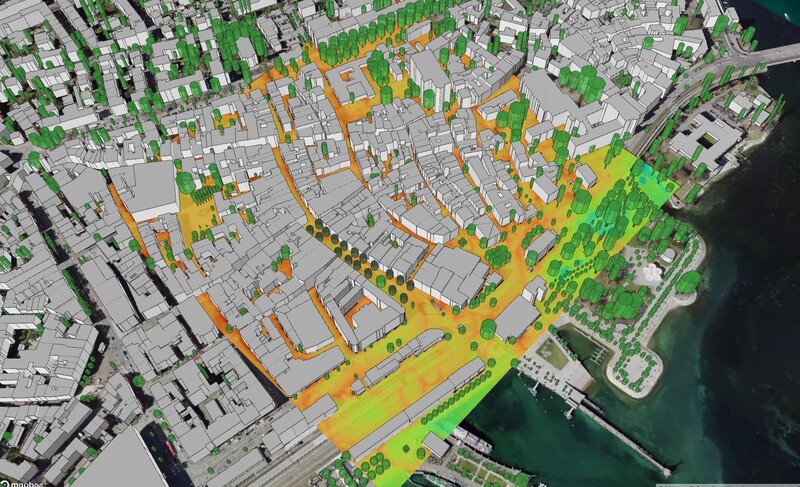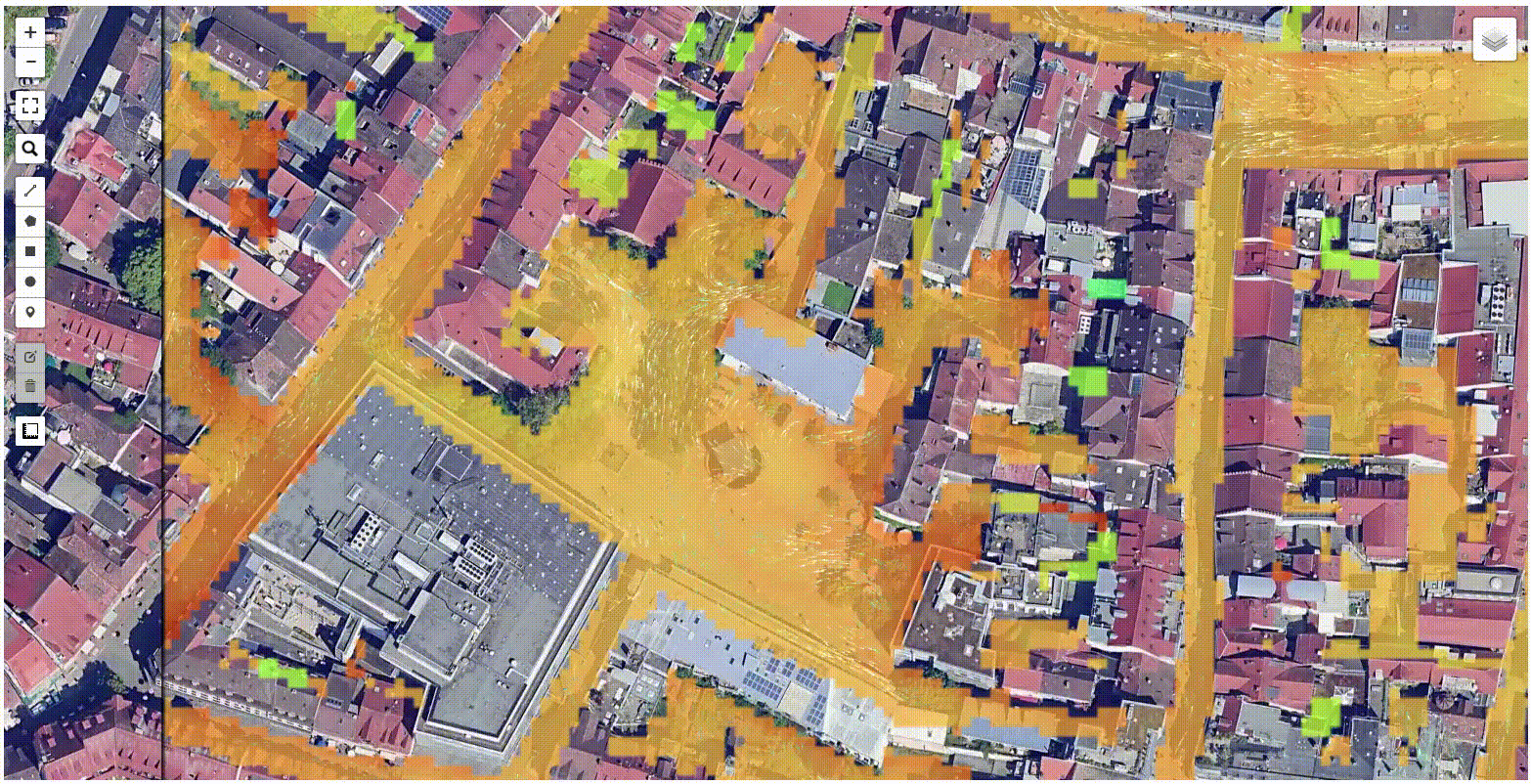CoKlimax
Urban Climate Simulation with PALM-4U
Constance
Urban climate simulation with PALM-4U: An evidence-based approach for sustainable urban development
https://palm-web.streamlit.app/
The high-resolution, microscale urban climate simulation using the PALM-4U software provides the opportunity to precisely analyze urban environments and optimize future-oriented decision-making processes. Various planning scenarios can be thoroughly examined, promoting the sustainable design of urban spaces. Through PALM-4U, users gain detailed insights into the temperature distribution in the outdoor areas of urban areas and the identification of urban heat islands. The software allows for a comprehensive analysis of the cold air budget and urban air pathways, the simulation of wind patterns to enhance wind comfort, and the early detection of storm-related hazards. Evidence-based planning of adaptation measures, including green spaces, fresh air corridors, and shading, contributes to reducing heat stress and improving the urban climate.
Our reference: In a case study commissioned by the city of Konstanz within the CoKLIMAx research project (Application of COPERNICUS data for climate-resilient urban planning, 2021-2024), the capabilities of the microclimate simulation platform with PALM-4U are demonstrated. The realistic urban configuration includes all typical features of urban complexity required for a physically grounded urban climate simulation. Model data is generated from various digital and analog data sources such as the city model in LOD2 quality, geoinformation from the Konstanz city administration, and point cloud-based information from LiDAR data. Urban climate simulations are calculated for static (clear-sky approximation) and dynamic climate conditions, with the latter being linked to a regional numerical weather prediction model (COSMO-DE) from the German Weather Service (DWD).
